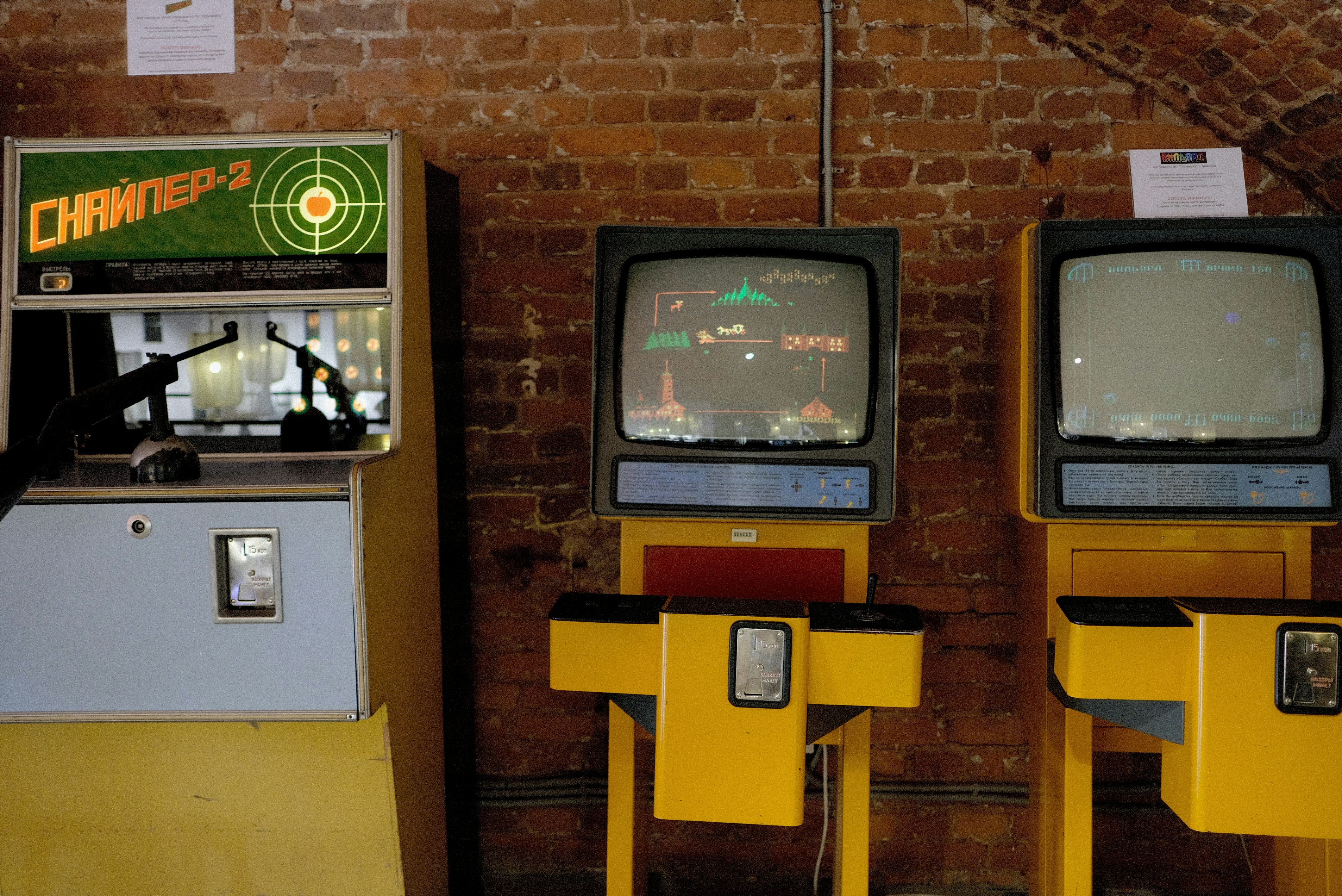The Psychology of Color in Game Design: Enhance Player Experience
Color is more than just a visual element; it's a profound psychological force that can influence player thoughts, emotions, and actions within video games. Understanding the psychology of color in game design can be the difference between an immersive experience and a mundane interface. In this exploration, we delve into how hues impact player behavior, strategic decision-making, and overall gameplay experience. Join us on this vibrant journey through the shades that shape our digital worlds!
The Significance of Color in Game Design

As a gamer, you might not think twice about the significance of the colors flashing on your screen, but they are doing much more than just beautifying your virtual environment. Color can evoke emotions, trigger memories, and affect the way players interact with the content around them. From the calming blues of serene landscapes to the fiery reds that suggest danger, color serves as a storytelling tool that game designers wield thoughtfully.
Research has shown that color can generate specific psychological responses. For example, red often signifies danger or urgency, prompting players to react quickly, while green can create a sense of tranquility. According to a study from the University of Southern California, players who engage in color-coded cues often make decisions based on their associations with those colors rather than analytical thinking.
Your gaming experience is subtly influenced by these hues; whether you’re dodging enemies or solving puzzles, color plays a pivotal role in shaping both the narrative and your journey as a gamer. Understanding this psychological foundation can deeply enhance your gaming experience.
How Colors Evoke Emotions

Each color resonates with emotions and thoughts that affect our behavior. Let’s take a closer look at some key colors and their psychological implications:
Red: The Color of Action

Red is often associated with intense emotions like passion, aggression, and urgency. In gaming, red can invoke a sense of danger or signify crucial moments that require immediate action. This is why many game interfaces display health meters in red, prompting players to react swiftly when their health dwindles. From the glowing eyes of a boss character to the pulsating red effects of an explosion, this color instills adrenaline and pushes players to engage actively.
Blue: The Color of Trust

Blue is frequently associated with calmness, stability, and trust. In many games, blue hues create an inviting atmosphere that can help players feel safe within the game’s world. This is especially true in exploration games where players venture into vast landscapes; a blue sky can signify a peaceful journey. Developers often use shades of blue in user interfaces to cultivate trust, guiding players comfortably through menus and tutorials.
Yellow: The Color of Optimism

Yellow exudes positivity and optimism, making it a great choice for evoking happiness and lightheartedness in games. It can be seen in vibrant environments or in NPCs designed to be friendly and cheerful. Games like "Super Mario" use yellow in coin collection mechanics, motivating players to pursue rewards and fostering a sense of achievement.
Green: The Color of Balance

Often associated with nature and harmony, green is a versatile color that can represent growth, healing, and stability. In gaming, green is often used to indicate safe areas or rewards, enhancing the sense of accomplishment as players register interactions with nature-themed elements. It plays a crucial role in survival games, where a green bar can signify player's health progress or vitality levels.
Black and White: The Essence of Contrast

Black often carries connotations of sophistication and power but can also invoke fear and mystery. In contrast, white signifies purity and simplicity. Game designers cleverly use these colors in juxtaposition to create tension or highlight crucial moments. For instance, a stark black figure against a white background can create impactful scenes that leave players pondering deeper meanings and narratives, such as in "Limbo."
Color and Strategic Decision-Making

Color cues are not just about aesthetics; they significantly influence decision-making in gameplay. Game designers harness color theory to encourage strategic thinking. For example:
Color-Coded Actions

Many games employ color code systems to guide players in decision-making. For instance, RPGs like "Final Fantasy" use colored elements to identify strategic decisions players must make regarding their spells or abilities. Blue spells might be defensive, while red spells denote aggressive actions. The brain quickly learns these associations, allowing players to make decisions based on color rather than fully fleshed-out gameplay instructions.
Environmental Cues

Color also plays a pivotal role in signaling winner versus loser scenarios. In competitive games, shades can highlight the urgency of a situation. For example, the gradual transition of colors in a shrinking play zone—a common mechanic in battle royale games—pushes players to make real-time decisions based on visual cues. Learning to read these patterns ensures players can adapt quickly, significantly affecting their gaming strategies.
Identification with Characters

In character-driven games, colors can also form a subconscious identification process. Players are more likely to choose characters whose palettes resonate emotionally with them. A bright, warm palette might appeal to players wanting to conquer challenges, while cooler tones may attract those who prefer tactical play styles.
The Impact of Colors in Game Interface Design

The interaction between players and games extends to how menus and interfaces are designed using color theory. Game developers work tirelessly to create user interfaces that are not only visually appealing but also functional and responsive to player needs.
Clear Call-to-Action

Utilizing colors effectively can guide players towards desired actions in menus and interfaces. For example, using red or green buttons for "Accept" or "Cancel" can draw immediate attention. Gaming platforms like Steam often leverage bright colors for notifications or messaging systems, ensuring allies and players can stay on task without confusion.
Internal linkage is essential here; for an even deeper understanding of how elements in games guide player engagement, check out our article on language in game design, which illustrates how textual and visual elements create a cohesive gaming experience.
Visual Consistency
Consistency in color palettes throughout a game fosters inclusive design which enhances familiarity and accessibility. Consistent use of colors allows players to decode game mechanics quickly, facilitating smoother interactions. Similarly, our exploration of sound in games at this link showcases how auditory elements intertwine with visual storytelling.
Differentiation of Modes
When players transition between different game modes—single-player to multiplayer or gameplay to a cutscene—the use of color can dynamically shift perceptions. Bright, vibrant colors might be leveraged in casual gameplay while darker tones could enhance emotional depth during story exposition.
Trends and Innovations: The Evolving Palette of Game Design
The psychology of color in game design is evolving, with developers testing boundaries and exploring new possibilities. Not only do they utilize existing theories, but they’re also pushing innovative approaches to enhance the gaming experience.
Neural Color Adjustments

With advancements in technology, developers can now create neural systems that adjust colors based on user preferences or visual impairments, ensuring inclusivity in gaming. This innovation provides a tailored, personalized experience that ultimately benefits all players.
AI's Role in Color Psychology
Artificial intelligence is playing an increasing role in tailoring color attributes to fit individual player preferences or even skill levels. Games may analyze player behavior to fine-tune colors dynamically, allowing for a more engaging and fulfilling experience. This means the future of gaming isn't just visual; it’s becoming more nuanced and deeply connected to player psychology.
Integration with VR Experiences
As virtual reality gains traction, the role of color becomes paramount in creating believable and immersive experiences. Designers must ensure saturation and hue contribute to emotional engagement while maintaining visual comfort. Future innovations could see dynamic color changes in response to user actions or even in conjunction with player emotional states through biometric feedback.
Final Thoughts: Enhancing the Gaming Experience Through Color
Understanding the psychology of color in game design goes beyond mere aesthetic appreciation; it’s about creating rich and engaging experiences that resonate with players on multiple levels. Game designers leverage colors to craft narratives, dictate player emotions, and enhance decision-making, and this awareness can empower gamers to leverage the visual elements to enrich their gameplay experience.
As technology evolves, the strategies for utilizing color are likely to expand even further, opening doors to immersive experiences previously deemed unimaginable. Whether you're a game developer looking to improve your designs or a player wanting to understand the nuances of your favorite titles better, embracing the vivid world of color can elevate your connection to gaming.
As you dive back into your next gaming adventure, pay closer attention to how colors affect your experience. Maybe those bright reds signalling danger will push you into action, or soothing blues will make you pause and enjoy the scenery. The emotional palette in gaming is richer than ever—and it's just waiting for you to explore!



